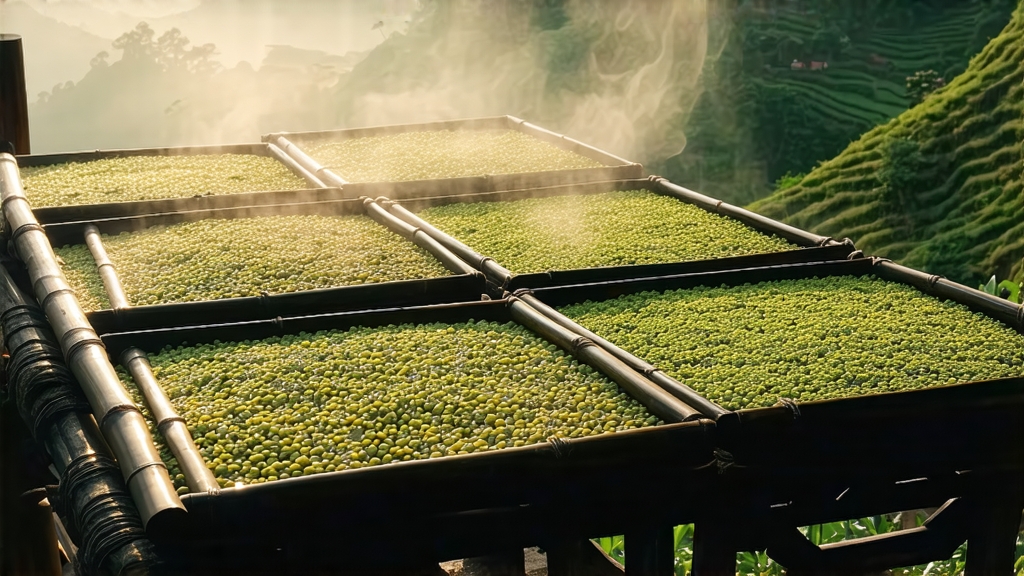
Meng Ding Huang Ya, literally “the yellow bud from Meng Ding,” is one of China’s most elusive yellow teas, produced on the mist-capped peaks of Mt. Meng in Sichuan Province. While green tea commands global fame and pu-erh enjoys cult status, yellow tea remains a whispered legend even inside China; within that quiet category, Meng Ding Huang Ya is the rarest song of all. This essay invites international tea lovers to discover its 1,200-year history, the micro-craft of “sealed yellowing,” and the sensory ritual that turns a handful of downy buds into liquid mountain dawn.
-
From Imperial Tribute to Vanishing Craft
The first written record dates to Tang Dynasty (618-907) annals, when local monks presented “meng ding stone flower” to the emperor. By Song (960-1279) the buds were steamed, pressed into cakes, and carried by caravan to Chang’an along the same corridors that later ferried silk. When the Ming court abolished compressed tea in 1391, leaf-style yellow tea emerged; Mt. Meng’s cool altitude and perennial cloud cover slowed oxidation naturally, giving the buds a pale straw hue that inspired the name “yellow.” During Qing Kangxi’s reign (1662-1722) Meng Ding Huang Ya was listed among the six “court teas” taxed in bud-form only, fetching three times the price of Dragon Well. After 1949 the state-owned Sichuan Tea Company kept one small workshop alive for diplomatic gifts; when market reforms arrived in the 1990s master craftsmen were already in their seventies. Today fewer than 300 kg of authentic Meng Ding Huang Ya reach the open market each spring, most purchased by collectors in Chengdu or Shanghai before overseas buyers ever hear of it. -
Micro-terroir on the Roof of Sichuan
Mt. Meng rises abruptly from the Sichuan basin to 1,456 m, trapping moist monsoon clouds against its granite face. The classic garden, Ganlu Si (Sweet Dew Temple), sits at 1,100 m where mean annual temperature is 14 °C and humidity hovers at 85 %. The soil is a thin layer of acidic purple sand-stone rich in selenium; drainage is so rapid that roots plunge two metres in search of water, concentrating amino acids. The fog filters UV-B light, prompting the plant to synthesize more theanine and less catechins, yielding the tea’s signature sweet-broth texture. Only the local small-leaf landrace, Camellia sinensis var. sinensis ‘Ganlu Zao,’ is used; its buds are tiptoed with ivory down and weigh barely 0.12 g each—one kilogram needs 22,000 plucks. -
Five Days to Make, Five Minutes to Ruin
Yellow tea’s defining step is men huang (“sealed yellowing”), a controlled re-humidification that occurs after kill-green but before final drying. On Mt. Meng the process is still done by three generations of the Yang family, holders of the 2008 intangible-culture patent.
Day 1, Qingming Picking: “one bud, just opened” standard, 5–7 mm length, harvested between 5 a.m. and 9 a.m. while leaf temperature is below 15 °C.
Day 1, Sha Qing (kill-green): buds are tossed in a 160 °C iron wok for 3.5 minutes with a rhythm of 200 flicks per minute; the goal is 55 % moisture retention—higher than green tea—to leave enough substrate for later enzymatic browning.
Day 1–2, Re Ying (hot wrapping): the still-warm leaves are wrapped in traditionally bleached cotton cloth squares; internal temperature stabilises at 38 °C for 6 h, then cloth is opened for 30 min to exhale CO₂. The cycle repeats five times over 24 h; chlorophyll breaks down, flavonols dimerize, and a subtle methyl-ephedrine note emerges.
Day 3, Chu Hong (primary bake): charcoal embers at 50 °C dry the leaf to 20 % moisture; bamboo trays are stacked inside a mud-brick kiln whose walls are painted with spent tea paste to moderate humidity.
Day 4, Fu Huang (second yellowing): leaf is restacked in 2 cm layers, covered with wet hemp cloth, and held at 30 °C for 12 h